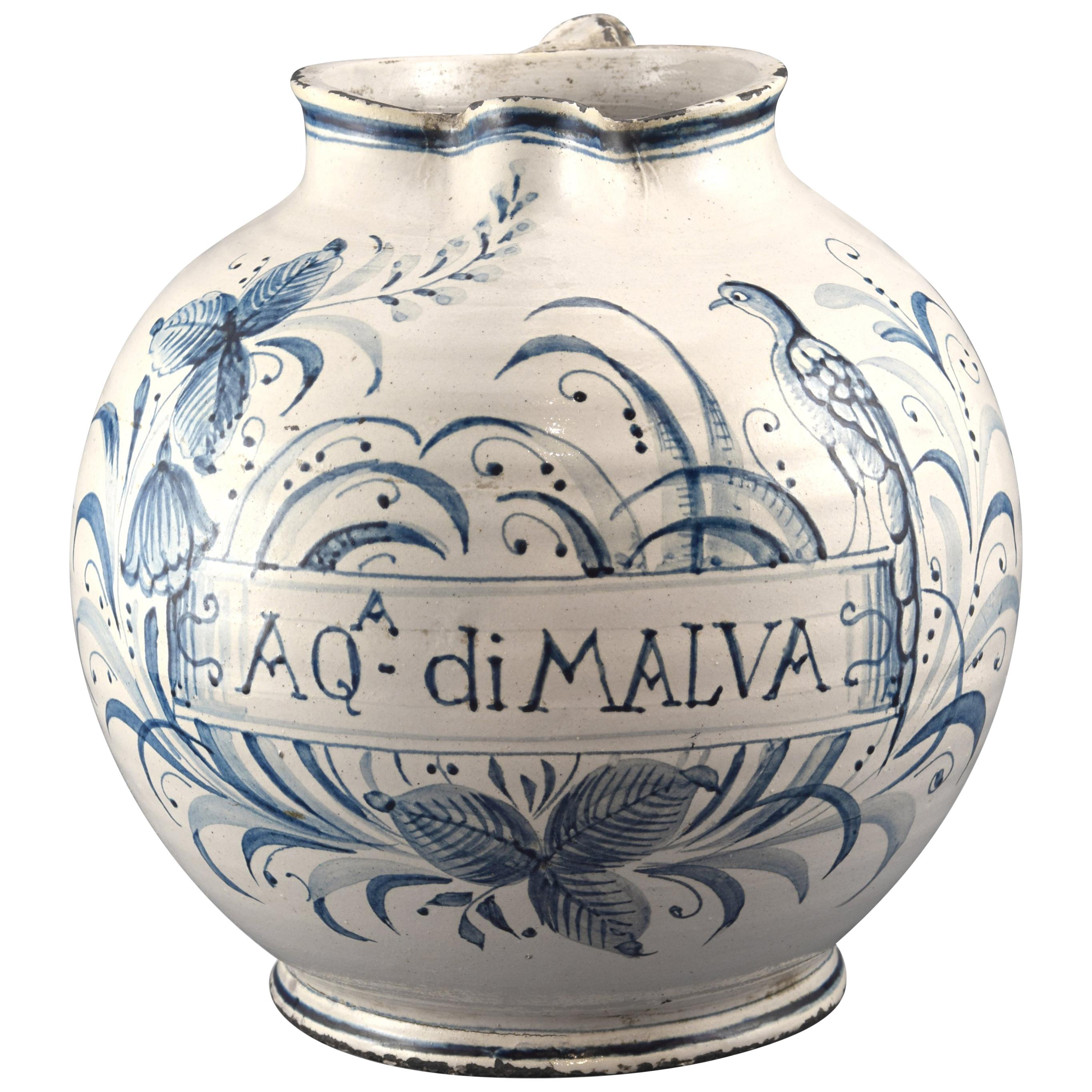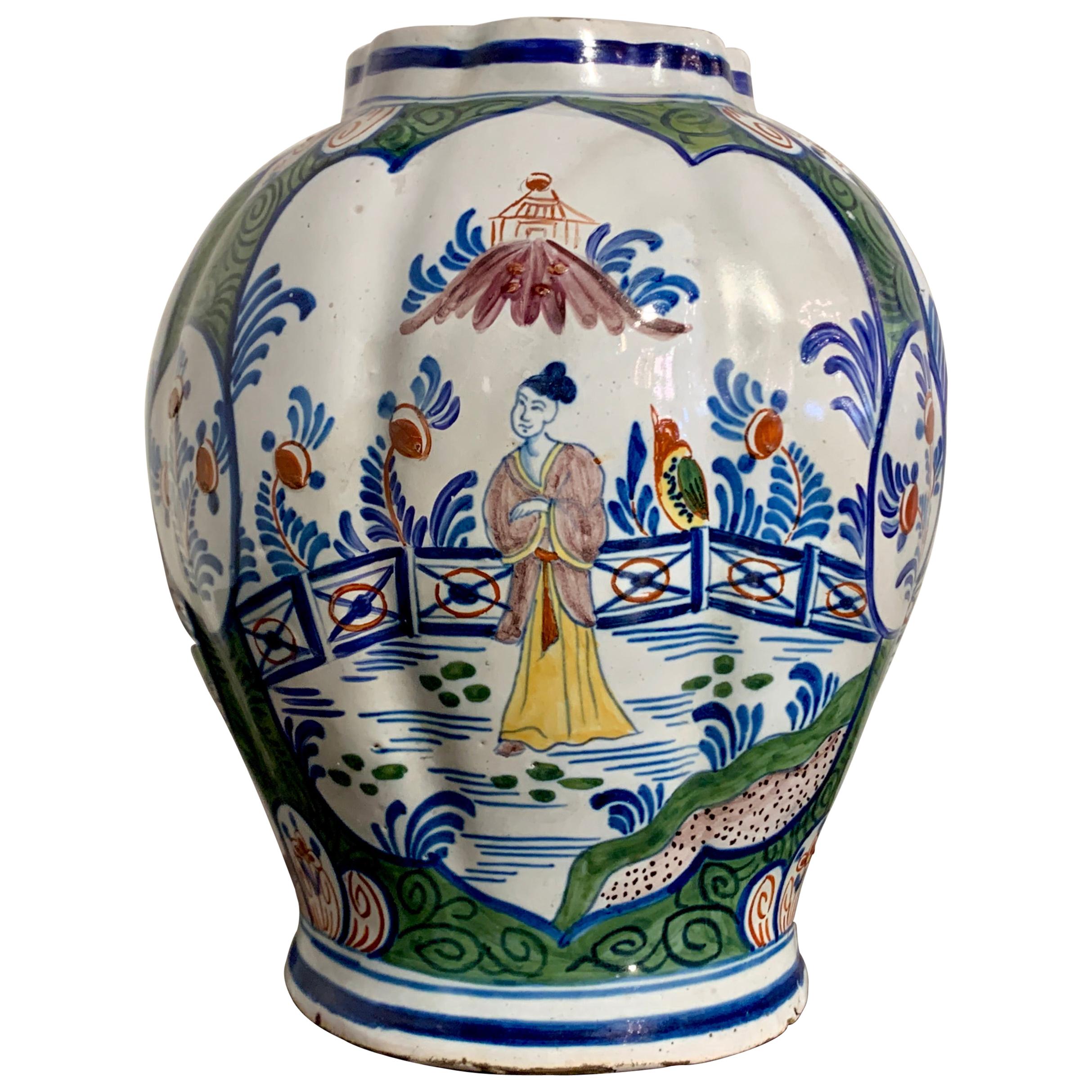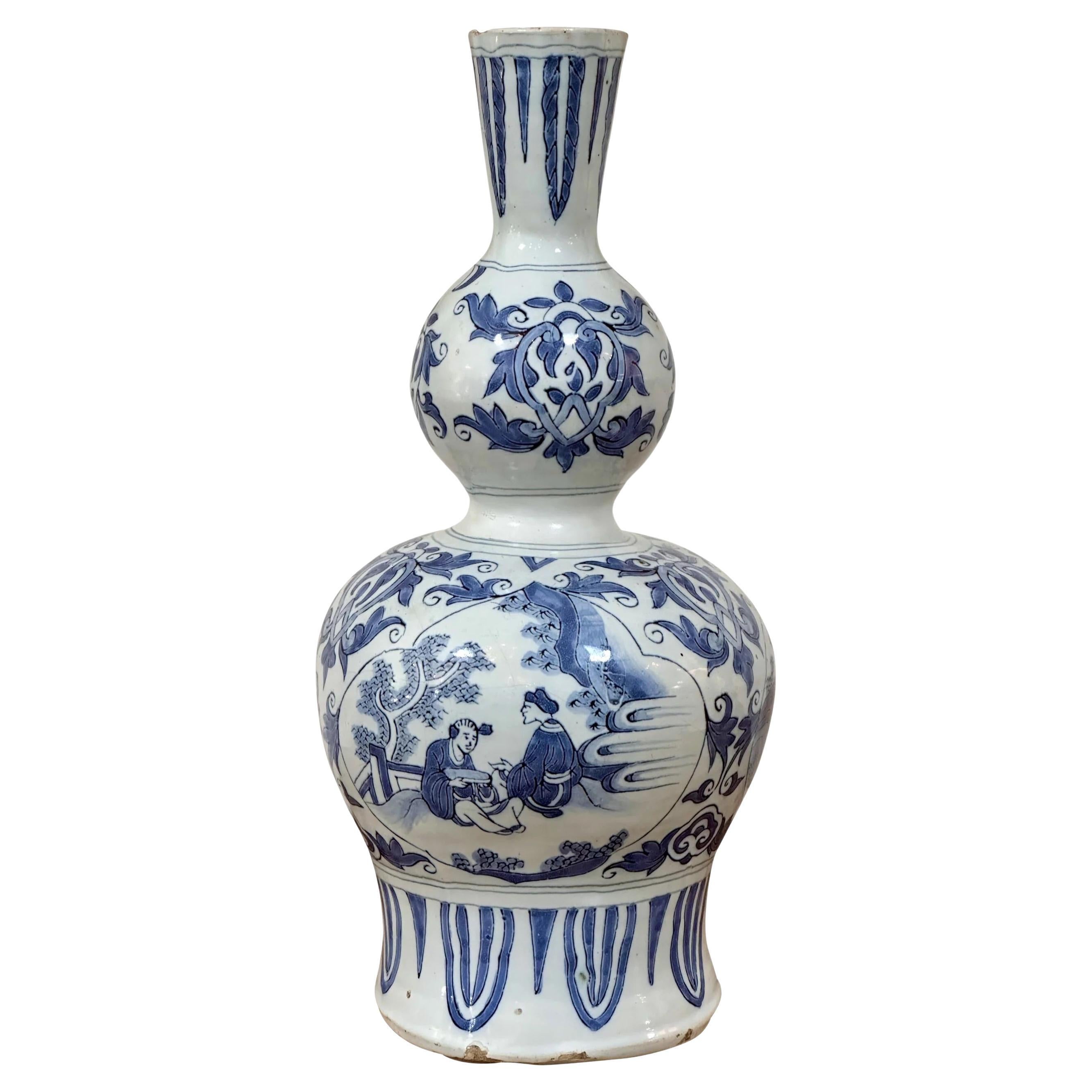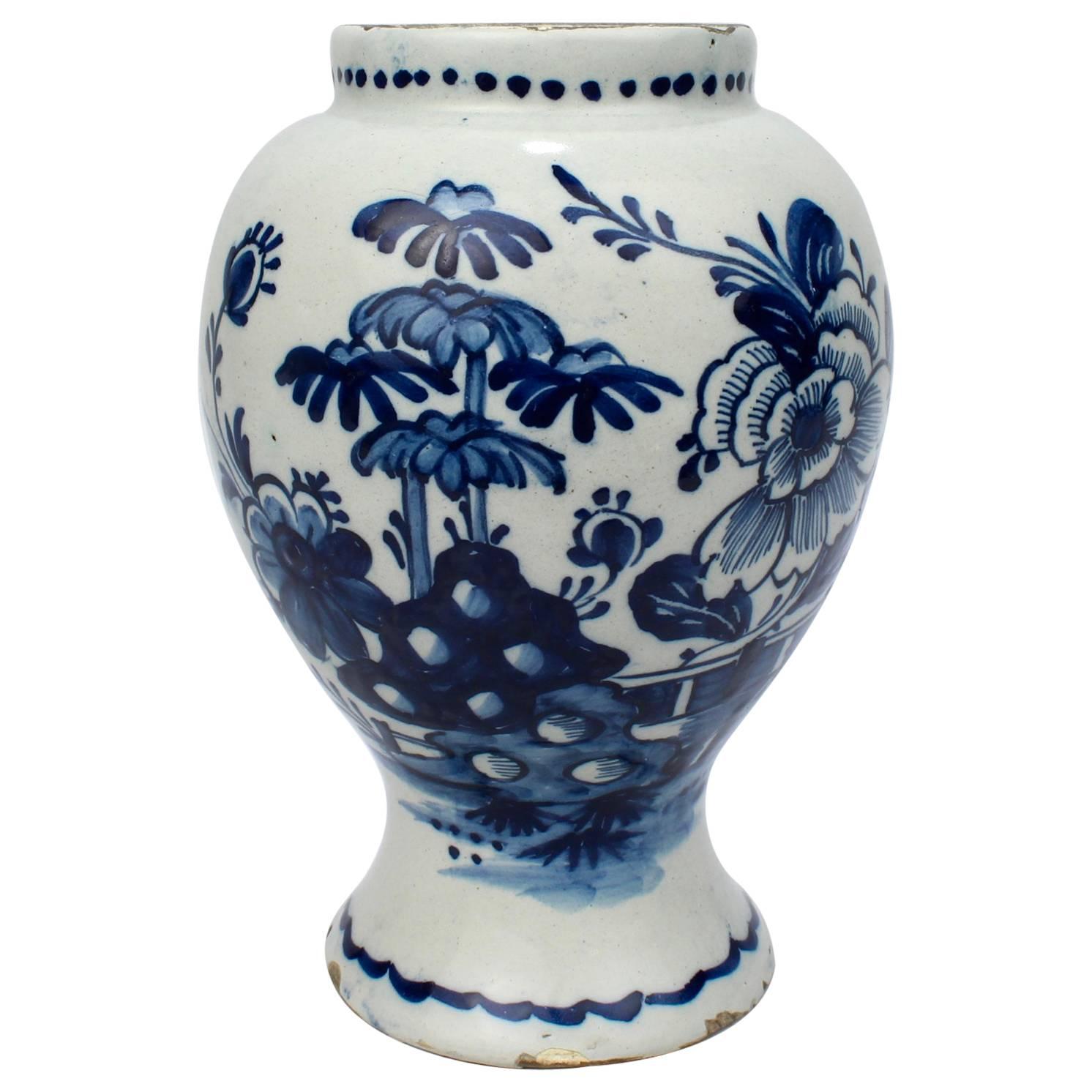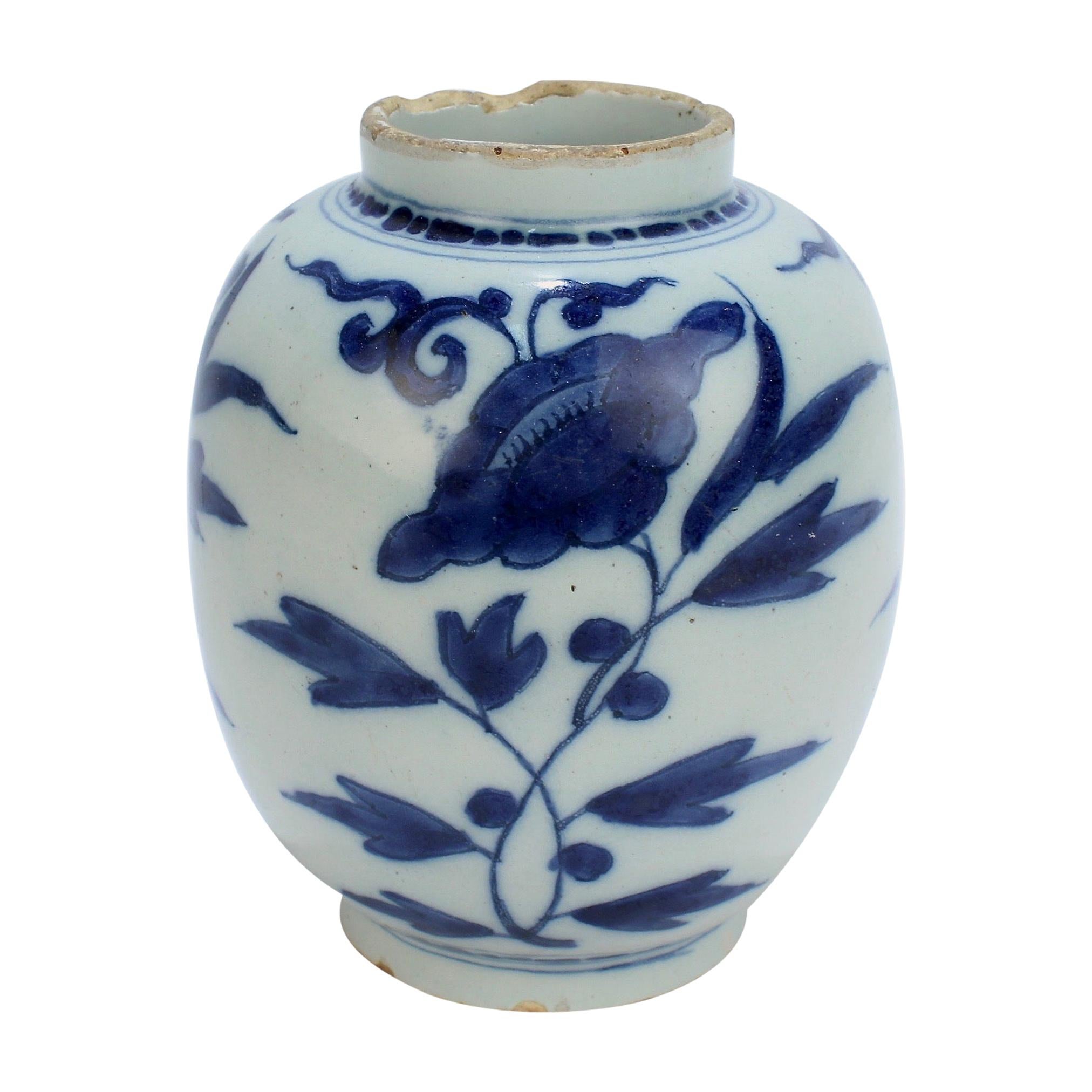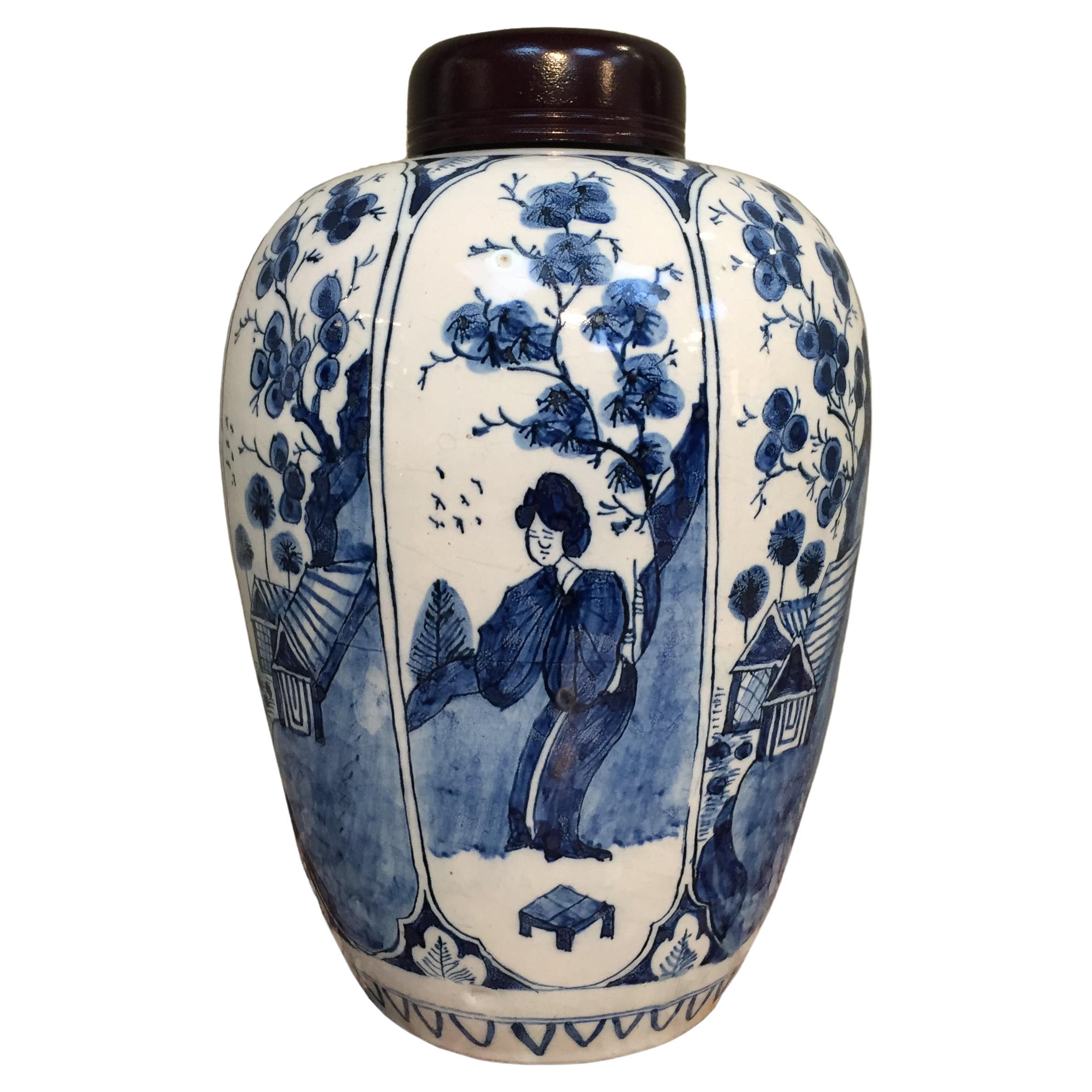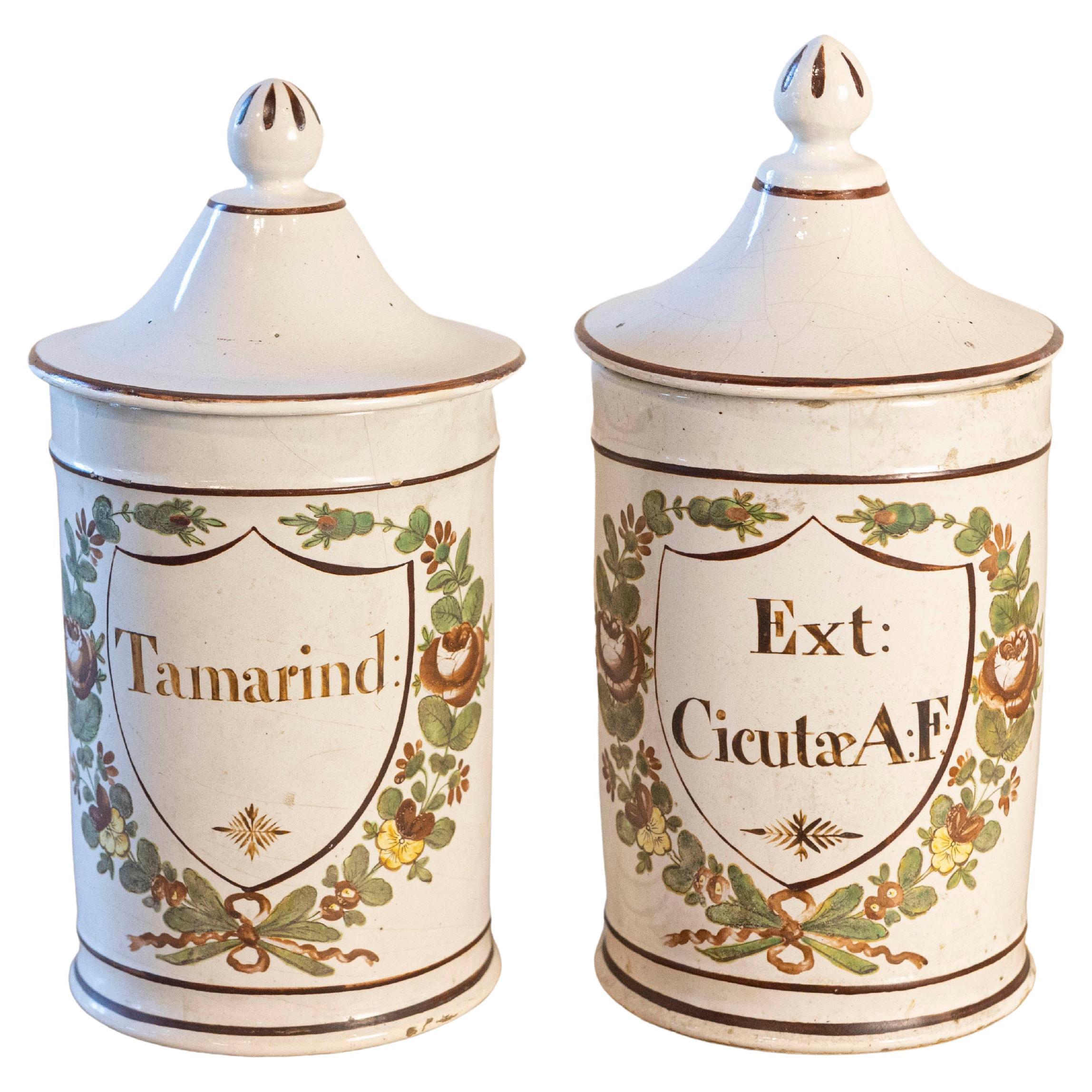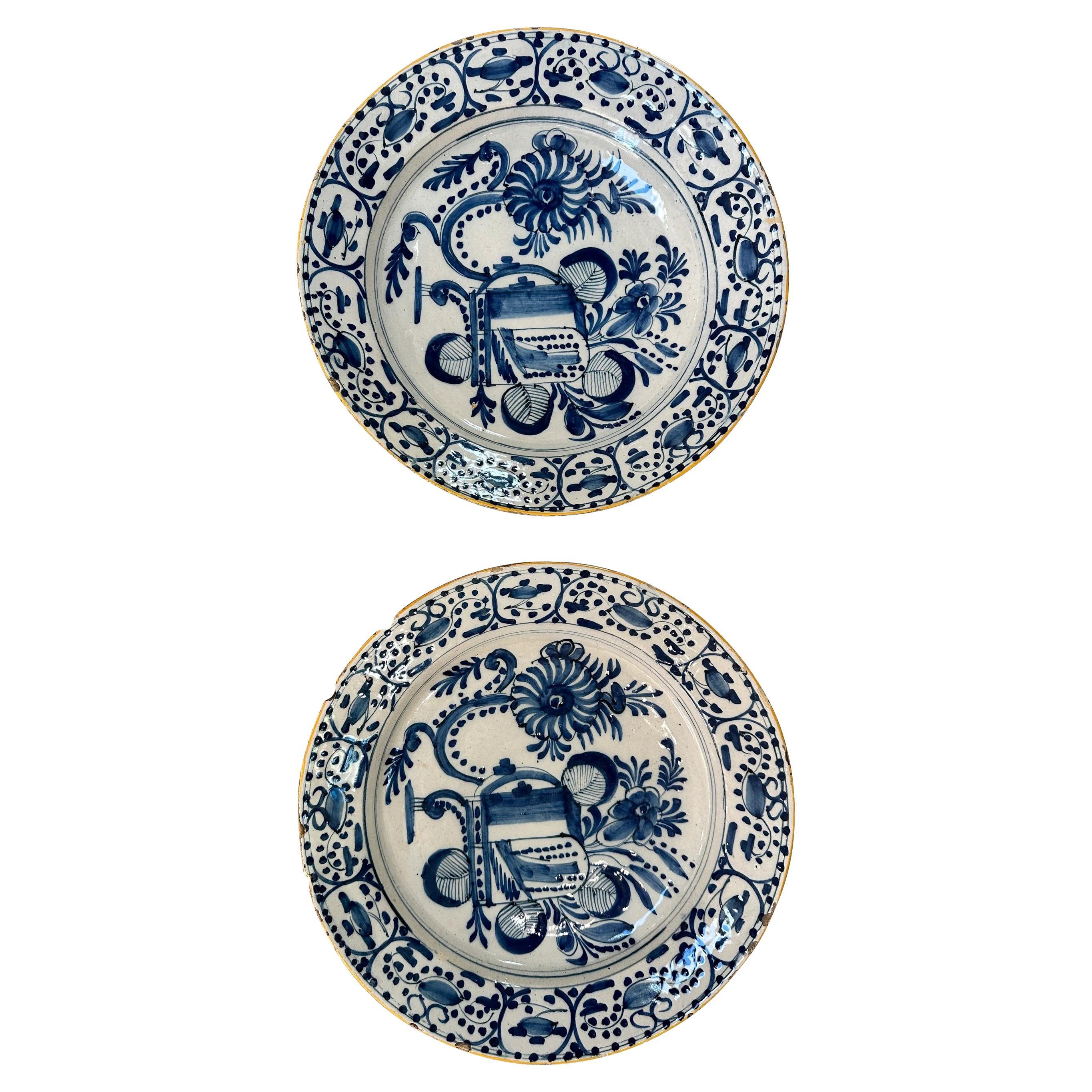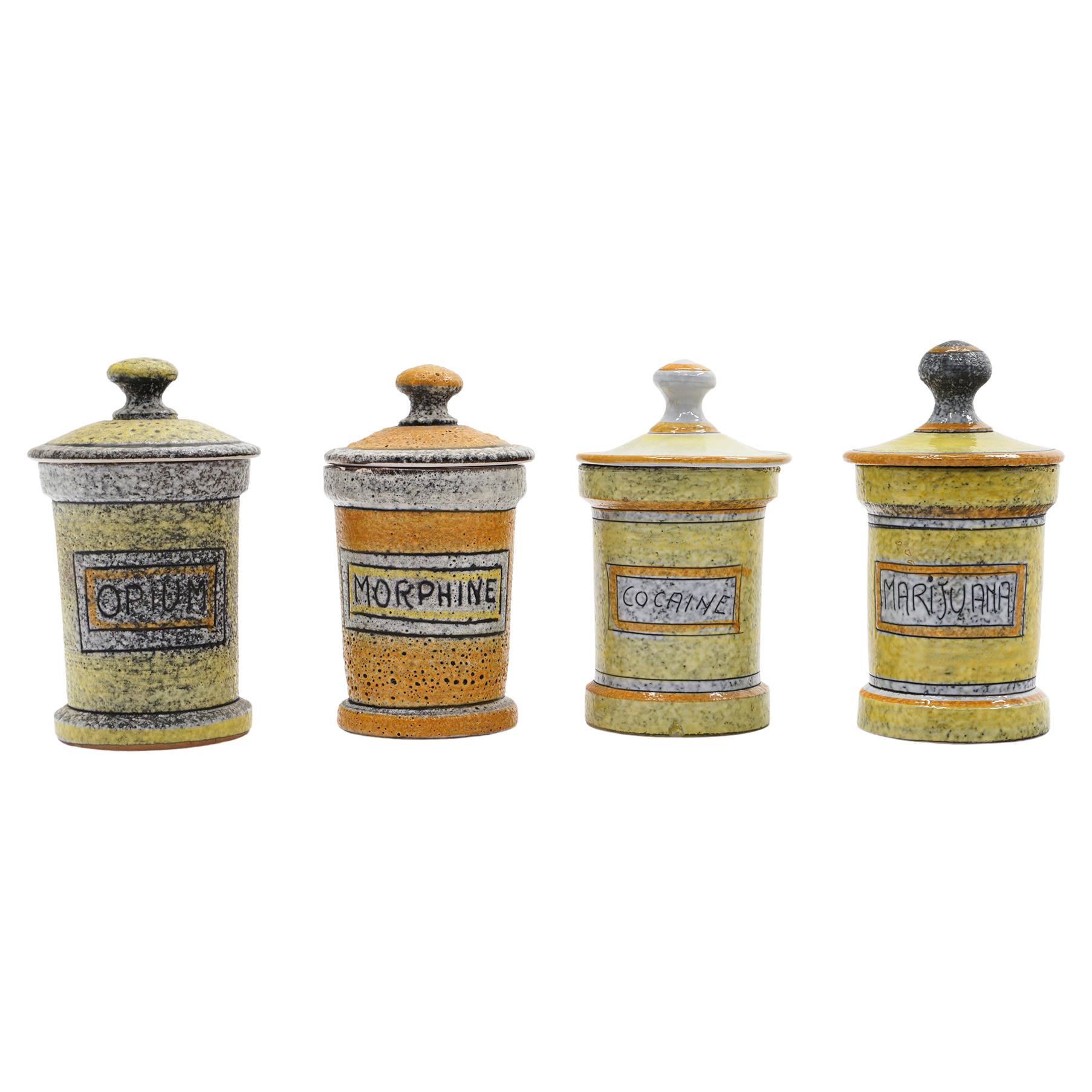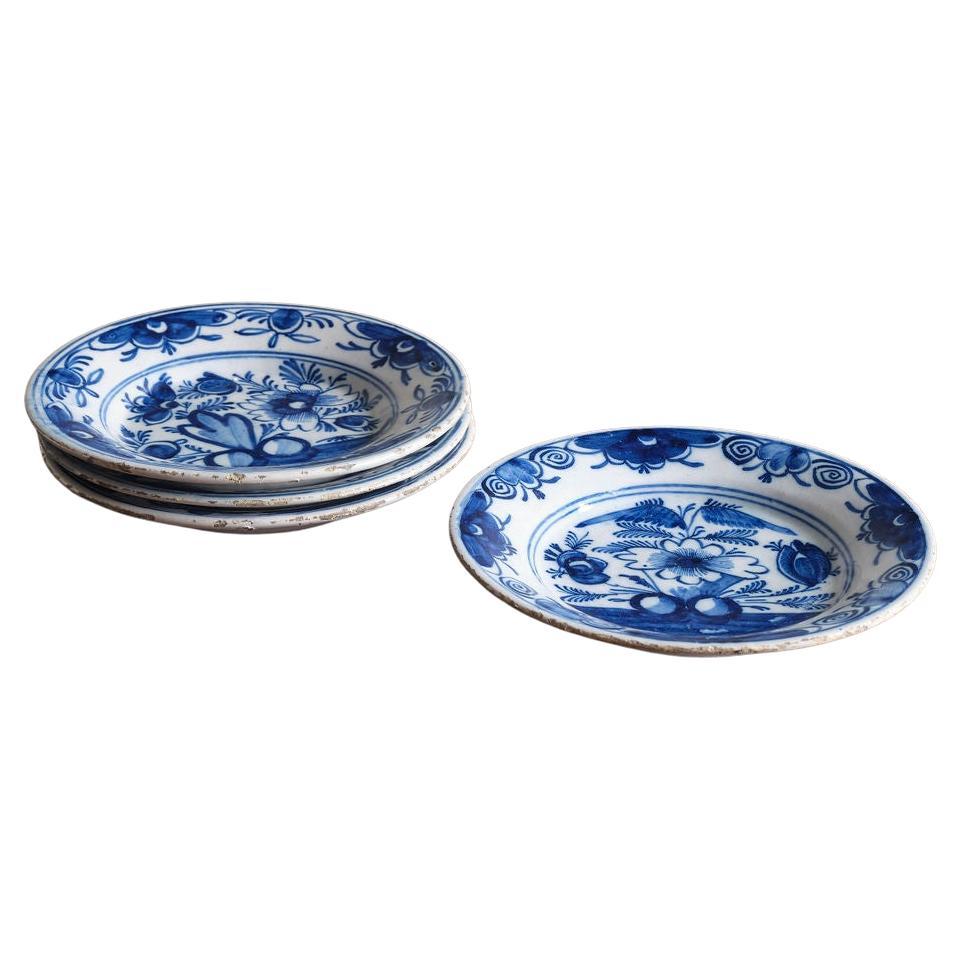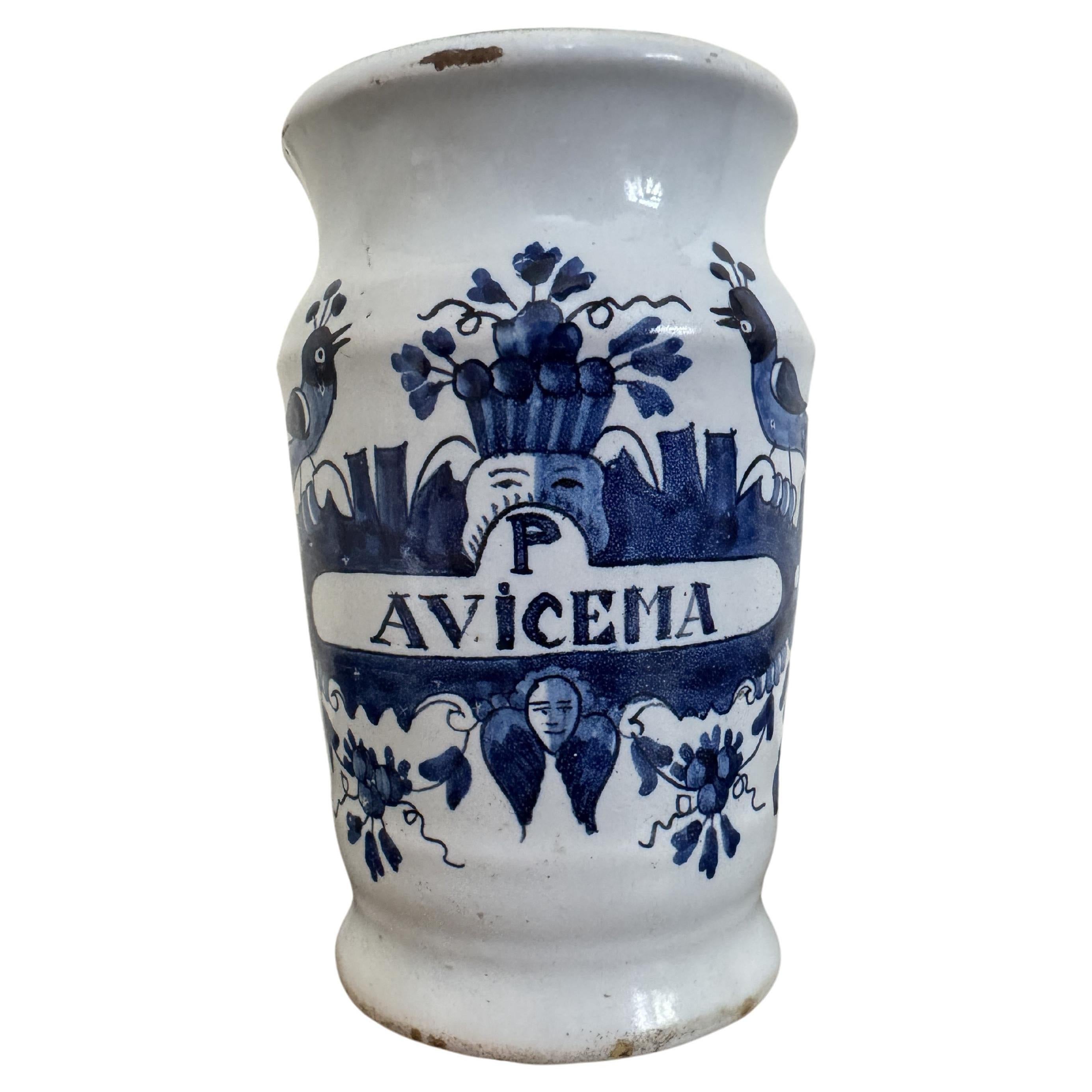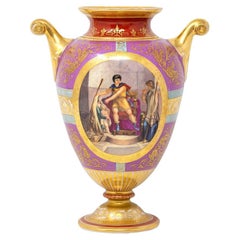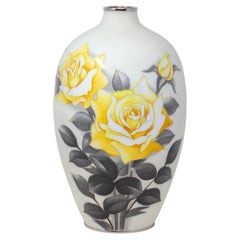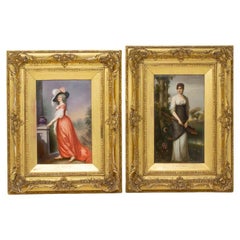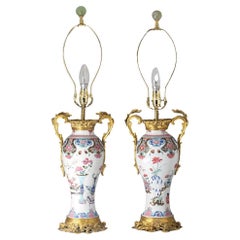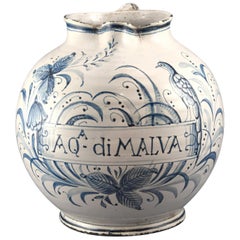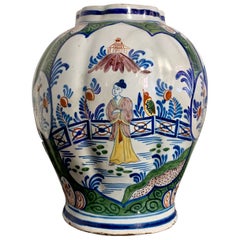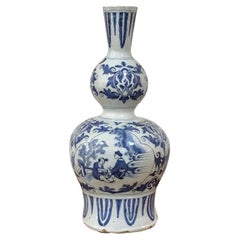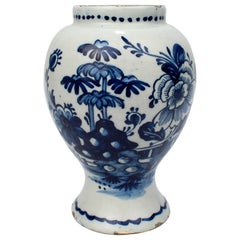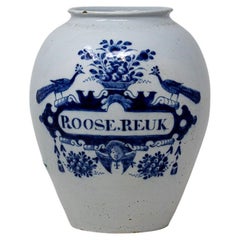
18th Century, Dutch Delft Drug Jar Rose Smell
View Similar Items
Want more images or videos?
Request additional images or videos from the seller
1 of 11
18th Century, Dutch Delft Drug Jar Rose Smell
About the Item
- Attributed to:AK Dutch Delftware (Maker)
- Dimensions:Height: 10.63 in (27.01 cm)Width: 8.66 in (22 cm)Depth: 8.66 in (22 cm)
- Style:Baroque (Of the Period)
- Materials and Techniques:
- Place of Origin:
- Period:
- Date of Manufacture:circa 1780
- Condition:Wear consistent with age and use. Minor losses.
- Seller Location:Newark, GB
- Reference Number:Seller: SRDD1stDibs: LU6971232629862
About the Seller
5.0
Vetted Professional Seller
Every seller passes strict standards for authenticity and reliability
Established in 2019
1stDibs seller since 2022
33 sales on 1stDibs
Typical response time: 1 hour
Authenticity Guarantee
In the unlikely event there’s an issue with an item’s authenticity, contact us within 1 year for a full refund. DetailsMoney-Back Guarantee
If your item is not as described, is damaged in transit, or does not arrive, contact us within 7 days for a full refund. Details24-Hour Cancellation
You have a 24-hour grace period in which to reconsider your purchase, with no questions asked.Vetted Professional Sellers
Our world-class sellers must adhere to strict standards for service and quality, maintaining the integrity of our listings.Price-Match Guarantee
If you find that a seller listed the same item for a lower price elsewhere, we’ll match it.Trusted Global Delivery
Our best-in-class carrier network provides specialized shipping options worldwide, including custom delivery.More From This Seller
View AllVienna Porcelain Classical Vase
By Royal Vienna Porcelain
Located in Newark, England
Fine ‘Vienna‘ Austria porcelain vase. The vase of Classic Roman shape with flared rim and pinched neck with scrolling shoulders and tapered body stood...
Category
Antique Late 19th Century Austrian Classical Roman Vases
Materials
Ceramic, Porcelain
Japanese Mid 20th Century Cloisonne Enamel Rose Vase Ando Company
By Ando Jubei
Located in Newark, England
LARGE SIZED OVOID VASE
From our Japanese collection we are pleased to offer this Japanese Cloisonne Enamel Rose Vase by the Ando Company. The vase of large ovoid form decorated wit...
Category
Mid-20th Century Japanese Mid-Century Modern Vases
Materials
Enamel
Pair of KPM Porcelain Plaques Franz Wagner Signed Sceptre Mark 19th Century
By Königliche Porzellan-Manufaktur (KPM), KPM Porcelain, Wagner Kpm, Franz Wagner
Located in Newark, England
Featuring Two Females In Period Dress
From our Ceramics collection, we are delighted to offer two KPM Porcelain Plaques by Franz Wagner sold as a pair. The KPM Porcelain Plaques fitted within their original gilt wood frames with scrolling borders both signed to the base of the frame F. Wagner each featuring a portrait of a female, the first plaque is a portrait of Charlotte, Lady Milnes after the British 18th century painter George Romney currently held in the Frick Collection, Manhattan, New York. The second plaque features the lute player after German 19th century historical portrait painter Friedrich August von Kaulbach. The Lady Milnes plaque is visibly signed to the lower right corner “Wagner” which is partially hidden by the frame, the second frame does not have a visible signature and is possibly hidden within the frame or very faint. Each of the plaques bear original provenance to the rear and are held within their original frames stating they were purchased in 1959 at £75 for the pair and were owned in a collection in Jersey along with collection numbers. Both plaques are firmly attributed to KPM and are well known plaques by the company under Wagners hand, we have not removed the original framing to confirm the mark and therefore are attributing them only. The KPM Porcelain Plaques date to the second half of the 19th century Circa 1890.
KPM (Königliche Porzellan-Manufaktur – The Royal Porcelain Factory) in Berlin was founded in 1763 Frederick the Great (King Frederick II). Its actual origins, however, lie in three private enterprises which, under crown patronage, were trying to establish the production of “white gold” (porcelain) in Berlin from the mid-18th century onwards.The company logo is a sceptre, which is stamped (painted prior to 1837) or incised on every piece. All painted pieces produced by KPM are also signed by the painter. KPM is still producing porcelain today.
Franz Wagner was from a famous family of painters working from Starhemberggasse in Vienna, Austria in the late nineteenth century. F. Wagner became known for his exceptional quality reproductions of historic old masters on porcelain for Vienna and KPM (Königliche Porzellan-Manufaktur). There is little information regarding his career but he was a known painter for Vienna and KPM active in the late 19th century to the early 20th century.
George Romney (1734-1802) was born in Beckside, Dalton-in-Furness, Lancashire (now part of Cumbria), to John Romney a cabinet maker and Anne Simpson. Raised in a cottage named High Cocken in modern-day Barrow-in-Furness, he was sent to school at nearby Dendron until he was withdrawn at the age of 11 to apprentice under his father’s business. He proved to have a natural ability for drawing and making things from wood including violins (which he played throughout his life). From the age of 15 Romney was informally taught art by a local watchmaker called John Williamson. His official studies began in earnest in 1755, when he went to Kendal, at the age of 21, for a 4-year apprenticeship with local artist Christopher Steele, who had himself studied with distinguished French artist Carlo Vanloo. In October 1756, Romney married Mary Abbot...
Category
Antique Late 19th Century German Art Nouveau Ceramics
Materials
Porcelain, Gesso
Chinese 18th Century Qianlong Ormolu Mounted Lamps
Located in Newark, England
Lampshades can be provided at an additional charge.
Famille Rose Decoration with a Jade Finial
From our Decorative collection, we are delighted to offer this pair of Chinese 18th...
Category
Antique Late 18th Century Chinese Qing Table Lamps
Materials
Jade, Brass, Bronze, Ormolu
French 18k Gold and Enamel Perfume Bottle
Located in Newark, England
Featuring Renascence Inspired Scenes
From our collectables category, we are thrilled to introduce this outstanding French Gold and Enamel Perfume Bottle...
Category
Antique Late 19th Century French Belle Époque Bottles
Materials
Gold, Enamel
French Sevres Château de Fontainebleau Porcelain Serving Dishes
By Manufacture Nationale de Sèvres
Located in Newark, England
Ormolu Mounted
From our Ceramics collection, we are delighted to offer a pair of French Sevres boat-shaped porcelain dishes with original ormolu mounts. The serving dishes beautifully decorated with a frieze of vibrant green undulating foliate garlands interspersed with mosaic style classical romanesque cartouches and birds. The inside decorated with gilt scrollwork embellishments with a six point start to the centre. The porcelain raised on four scrolling legs draped with garlands of fruiting vine. The porcelain bearing the Louis Philippe interlaced L's Sevres mark, the Chateau de Fontainebleau mark, incised marks for the original serves blank manufacturing along with initials and finally the painted initials WB. The dishes dated to the first half of the 19th century 1839/1840 respectively. The ormolu mounts stamped to the base CHER.
Château de Fontainebleau (also known as the Palace of Fontainebleau) is located southeast of Paris and is one of the largest French royal châteaux. The medieval castle served as a residence for the French monarchs from Louis VII...
Category
Antique Mid-19th Century French Louis Philippe Ceramics
Materials
Ormolu
You May Also Like
Ceramic Drug Jar or Syrup Jar, Possibly Italy, 18th Century
Located in Madrid, ES
The decoration of ceramics in blue tones on a white background was common in Europe as far back as the 17th century (Dutch and English pieces, works in Talavera de la Reina in Spain,...
Category
Antique 18th Century Italian Neoclassical Ceramics
Materials
Ceramic
Chinoiserie Dutch Delft Polychrome Faience Lobed Jar, 18th Century, Holland
By Delft
Located in Austin, TX
A charming Dutch Delft ginger jar of lobed form, with chinoiserie design in polychrome tin glazed enamels, 18th century, Holland.
The ginger jar (missing its lid), of globular fo...
Category
Antique Late 18th Century Dutch Chinoiserie Delft and Faience
Materials
Earthenware, Faience
18th Century Dutch Delft Blue & White Vase
Located in Charlottesville, VA
Dutch Delft Blue and White Vase, 18thc. Garlic head form decorated with chinoiseries in cartouches with floral scroll and lappets. 13.5” h. x 7” diam.
Category
Antique 18th Century Dutch Ceramics
Materials
Delft
18th Century Tin Glazed Dutch Delft Pottery Blue and White Vase or Jar
By Delft
Located in Philadelphia, PA
A very fine 18th century Dutch Delft pottery vase or jar.
Of typical vasiform shape with medium and deep blue Chinoiserie landscape decoration, dot border to the top rim, and swag...
Category
Antique 18th Century Dutch Baroque Vases
Materials
Delft
Late 17th-Early 18th Century Dutch Delft Vase or Jar Marked for Gerrit Kam
By De Paauw
Located in Philadelphia, PA
A fine, diminutive, and early Dutch Delft pottery vase or jar marked for Gerrit Kam.
With a stylized Chinese peony flower pattern.
Bearing an underglaze blue GK monogram to the bas...
Category
Antique Early 18th Century Dutch Baroque Vases
Materials
Delft
Blue and White Dutch Delft Lidded Jar in Chinoiserie, Early 18th Century
By Delft
Located in AMSTERDAM, NH
An Early Dutch Delftware lidded jar with chinoiserie decoration.
Origine: Delft, The Netherlands
Date: Early 18th century
Workshop: Unknown.
A genuine blue and white lidded j...
Category
Antique Early 18th Century Dutch Chinoiserie Delft and Faience
Materials
Ceramic, Delft, Faience
Recently Viewed
View AllMore Ways To Browse
Cherub Pottery
Peacock Pottery
Drug Jar
Delft Peacock
Dutch Delft Peacock
16th Century Delftware
Peacock Jars
Peacock And Roses Vase
Antique Drugs Sign
Smell The Roses
Antique Chemist Jars
Ceramic Vase White Peacock With Roses
African Jug
Bubbled Glass Jar
Jalisco Pottery
Pair Chinoiserie Jars
Bronze Lidded Jars And Lids
Italy Green Glass Jars
